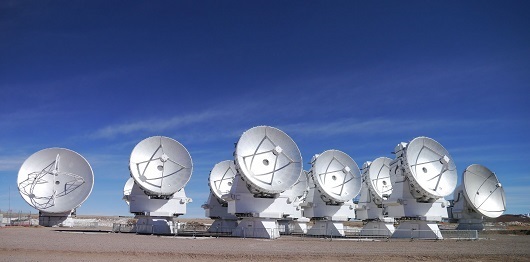19 November 2015
The discovery of a tiny new super stormy star could have major implications for the search for habitable planets outside the Solar System.
A team of astronomers, including researchers from the University of St Andrews, has identified a small, super cool star with a monstrous temper which shows evidence of much stronger flares than anything our Sun produces.
If similar stars prove to be just as stormy, then potentially habitable planets orbiting them are likely to be much less hospitable than previously thought.
Lead author Peter Williams of the Harvard-Smithsonian Centre for Astrophysics (CfA) said: “If we lived around a star like this one, we wouldn’t have any satellite communications. In fact, it might be extremely difficult for life to evolve at all in such a stormy environment.”
The research team targeted a well-known red dwarf star located about 35 light-years from Earth in the constellation Boötes. The object is so small and cool that it is right on the dividing line between stars, which fuse hydrogen, and brown dwarfs which do not.
One of the things that makes this small star remarkable is that it spins rapidly, completing a full rotation approximately every two hours.
Previous data from the Very Large Array in Socorro, New Mexico, showed that this star has a magnetic field several hundred times stronger than our Sun. This puzzled astronomers because the physical processes that generate the Sun’s magnetic field shouldn’t operate in such a small star.
The researchers examined the star with the new Atacama Large Millimeter/Submillimeter Array (ALMA) and detected emissions 10,000 times brighter than those produced by Earth’s Sun, even though it has less than one-tenth of the Sun’s mass emission.
This is the first time that flare-like emissions at such high frequencies have been detected from a red dwarf star.
Co-author Dr Christiane Helling of the School of Physics and Astronomy at St Andrews said: “This is a very exciting finding which supports our recent suggestion that the local thermal ionisation in ultra-cool atmosphere might allow to seed the formation of a chromosphere similar to that of our Sun also on brown dwarfs.
“The ALMA observations show that the associated energy release is considerably stronger than that from the Sun.”
This has important implications for the search for habitable planets outside the Solar System. Red dwarfs are the most common type of star in our galaxy, which makes them promising targets for planet searches.
But because a red dwarf is so cool, a planet would have to orbit very close to the star to be warm enough for liquid water to exist. That proximity would put the planet right in the bull’s-eye for radiation that could strip its atmosphere or destroy any complex molecules on its surface.
Astronomers will study similar stars in the future to determine whether this star is a one-off or an example of a new class of stormy stars.















